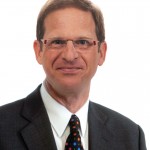If you fall for the notion that chiropractic “treats” symptoms, diseases or conditions, you have a problem. Especially if patients think you are.
You’ve taken a knife to a gunfight.
Make no mistake. Countless chiropractors have successfully waged a battle over the aches and pains; named and unnamed that patients have presented. There are probably a sufficiently high number of patients whose symptoms have resolved as a result to seduce some chiropractors into believing that their intervention was responsible.
Until it doesn’t.
Treating symptoms with adjustments, besides being the practice of medicine, for which you are probably not licensed (nor have malpractice insurance), is a classic case of confusing effect with cause. The patient’s symptoms resolved because their body is working better—not because your adjustments treated their headache or digestive issues!
It’s a difference that makes all the difference in the world.
While you may enjoy an enviable 85% success with back pain or a 93% success with headaches, there is always a portion of patients who do not receive the results for which they consult you. This is disappointing for them and you. For many chiropractors it prompts one or more inappropriate coping pathologies:
- Technique shopping
- Lack of confidence
- Second class citizenship
Perhaps a brief exploration of each of these deceptions will help you recognize (and reject) them should they appear during the course of your professional career.
1. Technique Shopping
If you believe it’s your golden hands that are producing the results, you’re also to blame should your golden hands not produce the desired outcome. That’s when many chiropractors will often look around for another gadget, a different way of performing their analysis or a new way of adding energy to a patient’s spine.
Instead of adding still one more technique to the mix, a more resourceful approach would be:
1) become a master of the techniques you already know,
2) realize that there is likely something going on in the patient’s life that is thwarting their healing response.
This illusion that your adjustments are rescuing the patient from their symptoms, while emblematic of medical thinking, overlooks the unspoken partnership between patient and chiropractor. Patients are in the midst of their lives. They are no doubt experiencing countless physical, chemical and emotional stressors. They often do things or neglect to do things that can hamper the healing response. In short, taking responsibility for resolving a patient’s particular health issue is risky business when what you’re actually doing is attempting to revive their ability to self-heal.
2.Lack of Confidence
Regardless of the pursuit, if you’re inclined to take responsibility for that which you don’t control, such as someone else losing weight or someone else’s symptoms resolving, it’s only a matter of time before you’ll experience an erosion of your certainty and self-confidence. This interferes with the confidence needed to communicate hope, further complicating the patient’s clinical response.
 I’m guessing that this is partly to blame for those embracing the “evidence-based” mantra that seems so trendy these days. Instead of aligning themselves with time-tested chiropractic principles designed to arouse the patient’s ability to self-heal, they resolve to only engage with patients afflicted with conditions for which randomized controlled trials published in peer reviewed journals showed a positive result.
I’m guessing that this is partly to blame for those embracing the “evidence-based” mantra that seems so trendy these days. Instead of aligning themselves with time-tested chiropractic principles designed to arouse the patient’s ability to self-heal, they resolve to only engage with patients afflicted with conditions for which randomized controlled trials published in peer reviewed journals showed a positive result.
Once you reduce chiropractic to such a limited application, you not only inappropriately anoint chiropractors as the high priests of healing, minimizing the inborn wisdom of the body, but you virtually eliminate the so-called “miracles” that prompted a previous generation to change careers and become chiropractors. What “evidence” is there that chiropractic enhances the healing response? How about the results with millions of actual patients for over a century! What other evidence would you need?
3. Second Class Citizenship
The first two pathologies conspire to create this one. I guarantee that chiropractors who profess to treat nothing, are among the most powerful, confident and self-assured chiropractors on the planet. Because they don’t invest themselves in something they can’t control—such as whether or not artfully adding energy to the patient’s spine at opportune times and places will result in the patient’s symptoms resolving within the handful of visits doled out by a stingy insurance company. Because they aren’t treating the patient’s symptoms.
Besides the importance of having your own clarity about this, you have a difficult, but not impossible, communication challenge. You must explain to patients that you won’t be treating their symptoms, but rather reducing interference to their body’s ability to function as it was designed. You must explain that your cervical adjustments don’t treat their headaches and that your lumbar adjustments don’t treat their sciatic pain. Permitting patients to maintain such beliefs sets you up for misunderstanding and the perception of being little more than an overeducated massage therapist.
SOLUTION
 But know this. Reviving the ability of a patient to self-heal is among the highest callings in health care. Because it actually is health care. Arousing an individual’s ability to function at the fullest potential, largely without iatrogenesis, is life-honoring. Shunning the temptation to be the source, in favor of being a guide and facilitator for the doctor-in-the-patient, demonstrates a profound understanding of the truth. Granted, there are patients who may find such honesty a bit frightening. However, when you show up with laser sharp boundaries, not only is there greater ease in your patient relationships, you exhibit the social health necessary to have far many more of them.
But know this. Reviving the ability of a patient to self-heal is among the highest callings in health care. Because it actually is health care. Arousing an individual’s ability to function at the fullest potential, largely without iatrogenesis, is life-honoring. Shunning the temptation to be the source, in favor of being a guide and facilitator for the doctor-in-the-patient, demonstrates a profound understanding of the truth. Granted, there are patients who may find such honesty a bit frightening. However, when you show up with laser sharp boundaries, not only is there greater ease in your patient relationships, you exhibit the social health necessary to have far many more of them.
 Mr. William Esteb has been a cash-paying chiropractic patient and advocate since 1981 when he was asked to write the profession’s first patient education video. Since then he has explored the many facets of the doctor/patient relationship through his books and blog posts. These days he provides a wide range of patient education materials through www.PatientMedia.com. Request a catalog and subscribe to Monday Morning Motivation, his weekly email with patient communication tips, practice marketing ideas and headspace insights.
Mr. William Esteb has been a cash-paying chiropractic patient and advocate since 1981 when he was asked to write the profession’s first patient education video. Since then he has explored the many facets of the doctor/patient relationship through his books and blog posts. These days he provides a wide range of patient education materials through www.PatientMedia.com. Request a catalog and subscribe to Monday Morning Motivation, his weekly email with patient communication tips, practice marketing ideas and headspace insights.










